From Entertainment to Enterprise: Transforming YouTube Videos into Powerful Business Presentations
The Evolution of Content Repurposing for Business
I've spent years exploring how businesses can maximize their content strategy. In this guide, I'll show you how to transform casual YouTube videos into professional business presentations that drive results and save valuable time.
Evolution of Content Repurposing for Business
I've watched with fascination as businesses increasingly turn to existing YouTube content as a goldmine for professional materials. This shift isn't just a passing trend—it's a fundamental evolution in how we approach content creation and efficiency.

The growing demand for video-to-presentation conversion stems from several key factors I've identified in my work with enterprises:
- Content saturation requires businesses to maximize utility from every piece of existing material
- Time constraints make creating presentations from scratch increasingly impractical
- The recognition that valuable insights often exist in video format but need business context
- The rise of remote work demanding more efficient knowledge sharing methods
What's particularly exciting is how AI turn videos into presentations technologies have revolutionized this process. We're no longer limited to crude screenshots or simple video embedding—we're now able to intelligently extract business-relevant insights, restructure information, and create cohesive narratives.
The Evolution of Video Repurposing Methods
The business value proposition is clear: by transforming existing YouTube content into presentations, I've helped companies save countless hours while significantly increasing their content's utility and reach. This isn't just about convenience—it's about extracting maximum value from content investments and ensuring business communications remain relevant and engaging.
Understanding the Conversion Challenge
In my experience working with marketing teams and executives, I've encountered numerous obstacles when attempting to manually convert YouTube videos into professional presentations. These challenges often derail well-intentioned efforts to repurpose valuable content.

Traditional methods each come with significant limitations:
| Method | Limitations | Business Impact |
|---|---|---|
| Screenshots | Time-consuming, misses context between frames, poor quality | Unprofessional appearance, missing key insights |
| Manual Transcription | Extremely labor-intensive, error-prone, loses visual elements | High resource cost, inconsistent quality |
| Video Embedding | Requires internet connection, lacks integration with slide content | Presentation flow disruption, technical failures |
| Automated Tools (Pre-AI) | Limited context understanding, generic outputs | Requires extensive manual refinement |
I've found that the core challenge lies in balancing information preservation with professional presentation standards. A YouTube video might contain valuable insights, but its casual format, pacing, tangents, and visual style rarely align with business presentation requirements.
Another crucial aspect I've observed is that context and business relevance matter significantly more than mere video capture. Simply reproducing video frames misses the opportunity to enhance and contextualize information for specific business purposes.
The Video-to-Presentation Conversion Challenge
flowchart TD
A[YouTube Video] --> B{Conversion Challenges}
B -->|Time Format| C[Linear Temporal Flow]
B -->|Content Density| D[Varying Information Density]
B -->|Presentation Style| E[Casual vs. Professional]
B -->|Context| F[General vs. Business-Specific]
C --> G[Transform to Spatial Format]
D --> H[Extract Key Information]
E --> I[Apply Business Standards]
F --> J[Add Business Context]
G & H & I & J --> K[Business Presentation]
When creating multimedia video presentation materials from YouTube content, I've learned that the most successful approaches don't just capture what's in the video—they transform it into something new that serves a specific business purpose.
AI-Powered Transformation Methodologies
In my work with advanced content transformation, I've seen how AI has fundamentally changed what's possible when converting YouTube videos into business presentations. Let me walk you through the key methodologies that make this possible.

PageOn.ai's Vibe Creation technology represents a significant advancement in how we interpret video content. Rather than simply capturing frames or transcribing words, this technology:
- Analyzes visual and audio elements simultaneously to extract comprehensive meaning
- Identifies key business-relevant insights that might be casually mentioned
- Recognizes visual metaphors and translates them into appropriate business imagery
- Filters out irrelevant content while preserving essential context
One of the most powerful approaches I've utilized is structuring video information using AI Blocks. This methodology:
AI Blocks for Video Transformation
flowchart LR
A[YouTube Video Input] --> B[Content Analysis Engine]
B --> C{AI Block Categorization}
C --> D[Key Points Block]
C --> E[Data Visualization Block]
C --> F[Process Flow Block]
C --> G[Executive Summary Block]
D & E & F & G --> H[Coherent Presentation Framework]
H --> I[Business Presentation Output]
Deep Search capabilities further enhance the transformation by:
- Identifying mentions of statistics that can be visualized more effectively in chart form
- Finding references to external sources that can be incorporated for additional context
- Recognizing industry-specific terminology that may need definition or elaboration
- Surfacing related business concepts not explicitly mentioned but relevant to the presentation
I've found that maintaining brand consistency is another crucial element when repurposing public YouTube content. PageOn.ai addresses this by automatically applying corporate visual identity elements, ensuring the transformed content feels native to your organization rather than borrowed.
Effectiveness of AI Transformation Components
Through these advanced methodologies, I've helped businesses transform casual YouTube content into professional-grade presentations that maintain the original insights while significantly enhancing their business applicability and impact.
Strategic Applications Across Business Functions
Throughout my career working with various departments, I've discovered that video-to-presentation transformation offers unique strategic advantages across different business functions. Let me share how this approach can be tailored to specific organizational needs.
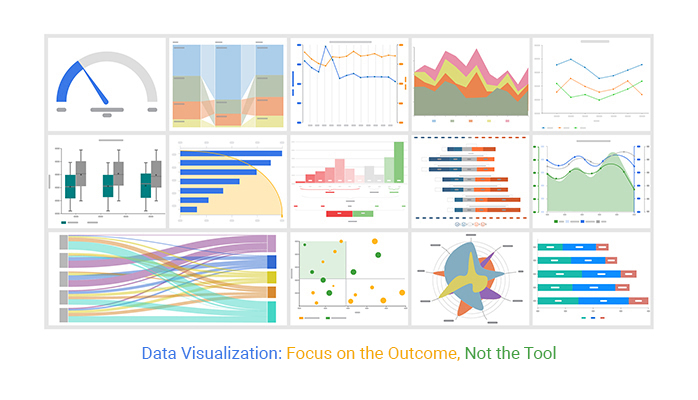
Sales: Converting Product Demonstrations into Client Presentations
I've worked with sales teams who transform detailed YouTube product demonstrations into concise, benefit-focused client presentations. This approach allows them to:
- Extract key product features and reorganize them according to specific client pain points
- Highlight relevant case studies mentioned briefly in videos
- Create comparison slides showing competitive advantages subtly referenced in demonstrations
- Develop ROI visualizations based on metrics mentioned throughout the video
Marketing: Transforming Thought Leadership into Campaign Materials
Marketing departments I've consulted with regularly leverage YouTube Innovation Pitch Deck concepts by:
- Converting executive interviews into visually compelling social media campaign assets
- Extracting key quotes and insights for thought leadership materials
- Creating infographics based on statistics mentioned in industry videos
- Developing trend analysis presentations from market overview videos
Training: Repurposing Educational Content
Learning and development teams benefit tremendously from this approach by:
- Converting technical YouTube tutorials into structured training modules
- Transforming industry webinars into department-specific learning materials
- Creating step-by-step process guides from demonstration videos
- Developing assessment materials based on educational content
Executive Communications: Distilling Complex Explanations
I've helped executives leverage this technology to:
- Transform industry analysis videos into concise board presentations
- Convert technical explanations into strategic overview slides
- Create executive summaries from lengthy conference presentations
- Develop scenario planning materials based on expert interviews
Business Impact by Department
By strategically applying these transformation techniques to specific business functions, I've helped organizations not only save time but fundamentally improve how they communicate and leverage existing knowledge across departments.
Optimizing Content Selection for Business Impact
Through my experience guiding content strategy for various organizations, I've developed a framework for identifying YouTube videos with high conversion potential for business use. Not all video content is equally valuable for transformation, and selecting the right source material is critical for success.
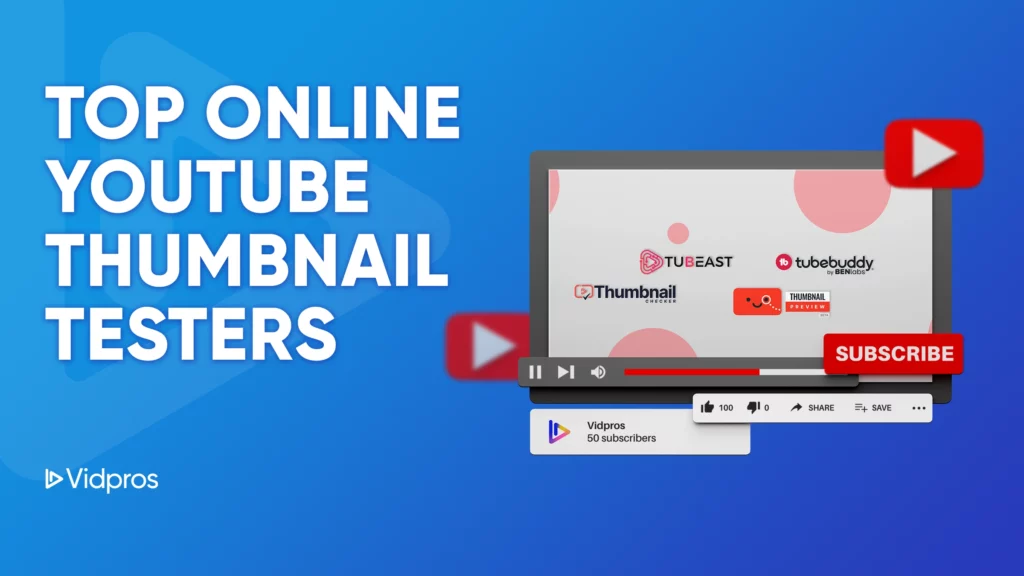
Identifying High-Potential YouTube Content
When evaluating videos for business presentation conversion, I look for these key indicators:
Content Structure
- Clear segmentation of topics
- Logical progression of ideas
- Presence of summary points
- Data-backed assertions
Visual Elements
- High-quality graphics
- Clear demonstrations
- Visual data representations
- Professional production quality
Content Depth
- Substantive insights beyond basics
- Expert perspective or analysis
- Unique methodologies or approaches
- Specific examples and use cases
Business Relevance
- Industry-specific information
- Actionable recommendations
- Competitive intelligence
- Trend analysis and forecasting
When evaluating content quality, I consider these critical factors:
Content Evaluation Framework
flowchart TD
A[YouTube Video Assessment] --> B{Evaluation Criteria}
B --> C[Information Density]
B --> D[Structure Clarity]
B --> E[Visual Quality]
B --> F[Business Alignment]
C --> C1[High: Fact-rich, data-driven]
C --> C2[Medium: Mixed information]
C --> C3[Low: Primarily entertainment]
D --> D1[High: Clear sections, summaries]
D --> D2[Medium: Some organization]
D --> D3[Low: Rambling, tangential]
E --> E1[High: Professional graphics]
E --> E2[Medium: Basic visuals]
E --> E3[Low: Few visual elements]
F --> F1[High: Direct business application]
F --> F2[Medium: Adaptable to business]
F --> F3[Low: Difficult to contextualize]
C1 & D1 & E1 & F1 --> G[Excellent Conversion Candidate]
C2 & D2 & E2 & F2 --> H[Moderate Conversion Potential]
C3 & D3 & E3 & F3 --> I[Poor Conversion Fit]
Aligning with Business Objectives
I've found that the most successful video-to-presentation transformations occur when there's clear alignment between the video content and specific business objectives:
| Business Objective | Ideal Video Characteristics | Transformation Focus |
|---|---|---|
| Lead Generation | Industry trends, problem-solution overviews | Pain points, ROI metrics, competitive advantages |
| Client Education | How-to guides, product demonstrations | Step-by-step processes, benefits, implementation tips |
| Team Training | Technical tutorials, best practices | Actionable workflows, key concepts, assessment points |
| Strategic Planning | Market analysis, expert interviews | Data insights, trend projections, strategic implications |
PageOn.ai's content assessment capabilities have dramatically improved my ability to predict which videos will translate most effectively into business presentations. The platform analyzes content structure, information density, and business relevance to provide transformation potential scores before you invest time in the conversion process.
By following these content selection strategies, I've helped businesses avoid wasting resources on videos with low transformation potential and instead focus on content that will deliver maximum business impact when converted to presentation format.
Design Principles for Video-to-Presentation Conversion
In my design work transforming video content into presentations, I've developed key principles that ensure the resulting materials are not just visually appealing but effectively communicate business value. These principles address the unique challenges of converting temporal media to spatial format.

Maintaining Visual Hierarchy
When I transform video content to presentation format, I follow these visual hierarchy principles:
- Identify the primary message of each video segment and elevate it to slide headline status
- Create clear visual distinction between main points and supporting details
- Use size, color, and position to guide the viewer's attention in a logical sequence
- Maintain consistent hierarchical patterns across all slides for cognitive ease
Extracting and Highlighting Key Data Points
I've found these approaches most effective for data visualization:
From Verbal Statistics
- Convert mentioned percentages into visual charts
- Create comparison graphs from verbally described differences
- Transform numerical sequences into trend lines
- Visualize proportions mentioned in passing
From Visual Data
- Recreate shown charts with enhanced clarity
- Extract data points from visible graphics
- Clean up and professionalize amateur visualizations
- Standardize inconsistent data representations
Incorporating Video Timestamps
I've developed these best practices for referencing the original video:
- Include discrete timestamp references for key points to enable deeper exploration
- Create QR codes linking to specific video moments for mobile access
- Add footnote-style references to connect presentation claims with video evidence
- Develop appendix slides with organized timestamp collections for reference
Visual Continuity Elements
Creating Visual Continuity
To maintain connection between the original video and the resulting presentation, I:
- Extract and refine key visual elements from the video for slide design
- Develop color schemes that echo the video's visual identity while meeting brand standards
- Use subtle visual motifs that reference the video source while enhancing professionalism
- Create transition slides that visually bridge video segments with presentation sections
By applying these design principles consistently, I create presentations that maintain the valuable insights from YouTube videos while significantly enhancing their business utility, professional appearance, and audience impact. These principles work particularly well when make presentation a YouTube URL is part of your strategy, allowing for seamless integration between the transformed content and its original source.
Case Studies: Successful Transformations
Throughout my career, I've witnessed remarkable transformations when businesses effectively convert YouTube content into powerful presentations. These real-world examples illustrate the potential impact of this approach.
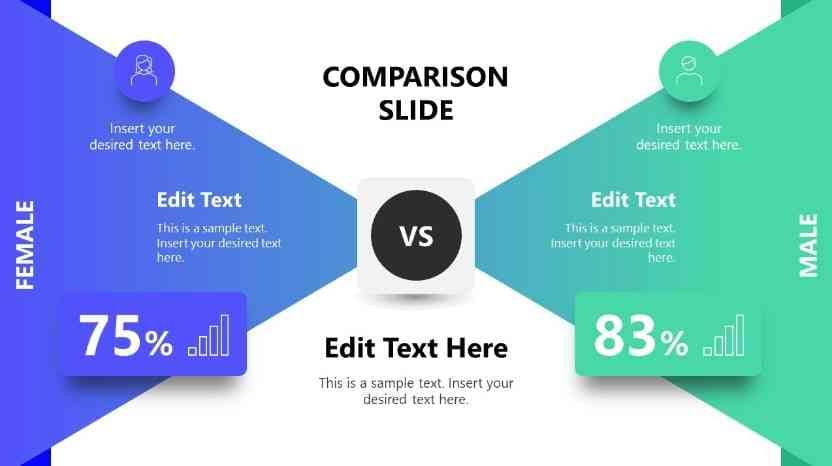
Marketing Agency: Industry Webinars to Client Pitch Decks
"We transformed a series of industry expert webinars into a compelling pitch deck that positioned us as thought leaders. The presentation helped us secure three major accounts worth over $2M in annual revenue."
— Creative Director, Digital Marketing Agency
Key transformation elements:
- Extracted forward-looking trend predictions scattered throughout 5 hours of video
- Created data visualizations from verbally mentioned statistics
- Developed a cohesive narrative that connected insights from multiple experts
- Added agency-specific capabilities that addressed the identified trends
Marketing Agency Transformation Process
flowchart LR
A[5 Industry Webinars] --> B[Content Analysis]
B --> C{Key Components}
C --> D[Trend Identification]
C --> E[Expert Quotes]
C --> F[Statistical Data]
C --> G[Case Examples]
D & E & F & G --> H[Structured Insights]
H --> I[Agency Capabilities Alignment]
I --> J[Client-Specific Customization]
J --> K[Client Pitch Deck]
Sales Team: Customer Testimonials to Proposal Slides
"We had dozens of customer testimonial videos that contained valuable insights but weren't being fully utilized. By transforming key segments into proposal slides, we increased our close rate by 32%."
— VP of Sales, SaaS Company
Transformation approach:
- Identified specific benefit statements within casual customer conversations
- Created before/after comparisons based on implementation stories
- Extracted ROI metrics mentioned throughout testimonials
- Developed industry-specific slide templates that could be quickly customized
Executive Briefings from Conference Keynotes
"Our strategy team transformed a series of conference keynotes into an executive briefing that saved our leadership team hours of research while ensuring they had the latest industry insights."
— Chief Strategy Officer, Manufacturing Firm
Key success factors:
- Distilled complex 45-60 minute talks into 5-7 slide executive summaries
- Created competitive intelligence matrices from various industry perspectives
- Developed action recommendation slides based on expert predictions
- Added company-specific impact assessments to each major trend
Training Materials from Technical Tutorials
"We transformed technical YouTube tutorials into structured training modules that reduced onboarding time by 40% and improved skill retention by 35%."
— L&D Director, Technology Company
Transformation methodology:
- Restructured chronological tutorials into concept-based learning modules
- Created practice exercises based on demonstrated techniques
- Added company-specific applications to generic technical concepts
- Developed assessment tools to verify knowledge transfer
Business Impact Across Case Studies
These case studies demonstrate that successful video-to-presentation transformations go far beyond simple content extraction. In each case, the organizations added significant value through contextualizing, restructuring, and enhancing the original content to serve specific business objectives.
Advanced Integration Techniques
As I've refined my approach to video transformation, I've developed advanced techniques that go beyond basic conversion to create truly integrated, powerful business presentations. These methods allow for more sophisticated content blending and enhancement.
/filters:no_upscale()/news/2025/03/facebook-video-delivery-unifed/en/resources/1meta-videa-pagination-1742222418558.jpeg)
Combining Multiple Video Sources
I've found these approaches particularly effective for creating a cohesive narrative from diverse sources:
- Thematic mapping to identify common threads across multiple videos
- Contrast and comparison frameworks for presenting different perspectives
- Chronological restructuring to create evolutionary narratives
- Point-counterpoint formats for addressing complex topics with multiple viewpoints
Multi-Source Integration Framework
flowchart TD
A1[Video Source 1] --> B[Content Extraction]
A2[Video Source 2] --> B
A3[Video Source 3] --> B
B --> C{Integration Strategy}
C --> D[Thematic Integration]
C --> E[Sequential Integration]
C --> F[Complementary Integration]
C --> G[Contrasting Integration]
D & E & F & G --> H[Unified Content Structure]
H --> I[Coherence Refinement]
I --> J[Transition Development]
J --> K[Integrated Presentation]
Supplementing Video-Derived Content
To enhance the value of transformed video content, I integrate these additional elements:
- Current market data to contextualize historical video insights
- Industry benchmarks to provide comparative context
- Competitive analysis frameworks to position video content strategically
- Regulatory or compliance information to ensure business relevance
Creating Interactive Elements
I enhance engagement by incorporating these interactive components:
- QR codes linking to specific video segments for deeper exploration
- Interactive decision trees based on video content scenarios
- Clickable data visualizations that reveal underlying video insights
- Embedded micro-assessments to reinforce key video concepts
Using PageOn.ai's Agentic Capabilities
I leverage PageOn.ai's advanced features to blend video insights with original business content:
- Automated theme detection across video libraries to suggest complementary content
- Intelligent gap analysis to identify where additional business context is needed
- Style matching to ensure consistent tone across video-derived and original content
- Personalization agents that adapt video insights to specific audience needs
Integration Technique Effectiveness
By applying these advanced integration techniques, I create presentations that go far beyond simple video conversion. The resulting materials blend the authenticity and richness of video content with the precision and customization of purpose-built business presentations. When working with turn Google Slides into video workflows, these techniques can be applied in reverse to create a seamless content ecosystem.
Measuring Success and Optimizing Results
Throughout my career helping businesses transform video content, I've developed comprehensive approaches to measuring success and continuously improving results. Establishing the right metrics and feedback systems is crucial for maximizing the business value of these transformations.
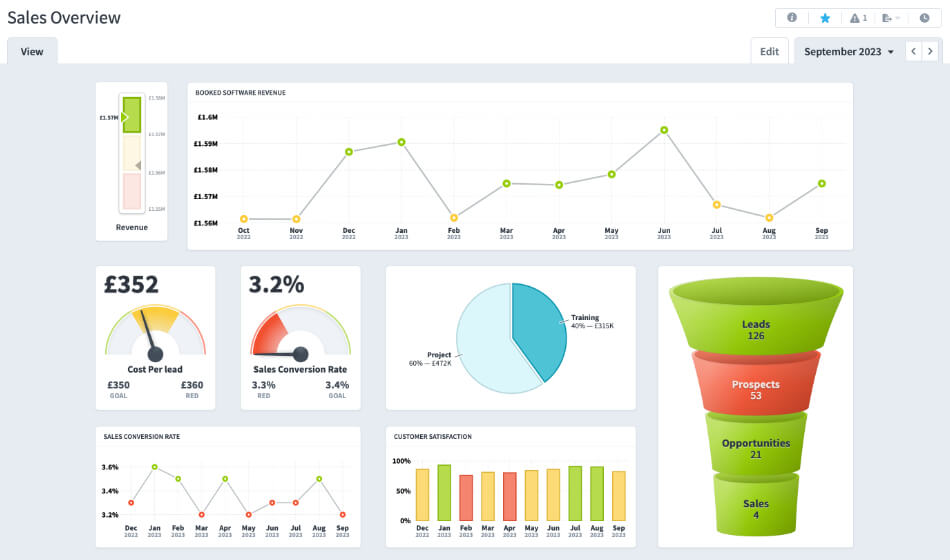
Key Performance Indicators
I recommend tracking these KPIs to evaluate video-to-presentation effectiveness:
Efficiency Metrics
- Time saved vs. creating presentations from scratch
- Production cost reduction percentage
- Resource allocation improvements
- Content production velocity increases
Impact Metrics
- Audience engagement rates
- Information retention improvements
- Business outcome correlation
- Decision-making acceleration
Quality Metrics
- Information accuracy preservation
- Visual cohesion scores
- Brand alignment measurements
- Accessibility improvements
Business Metrics
- Conversion rate improvements
- Meeting efficiency increases
- Knowledge transfer acceleration
- Decision cycle reduction
Testing Methodologies
I've found these testing approaches most effective for comparing presentation performance:
- A/B testing different transformation approaches with similar audience segments
- Pre/post assessments to measure knowledge transfer effectiveness
- Comparative analysis of engagement metrics across presentation formats
- Controlled experiments measuring decision quality after different presentation types
Performance Comparison: Video vs. Transformed Presentations
Feedback Loops
I implement these feedback mechanisms for continuous improvement:
- Structured audience feedback forms with specific transformation quality metrics
- Presenter experience surveys to identify usability improvements
- Technical review processes to ensure information accuracy
- Cross-functional assessment teams to evaluate business alignment
Analytics Approaches
To track engagement with repurposed content, I recommend:
- Slide-level engagement tracking to identify high and low-performing content
- Attention mapping to understand which transformed elements resonate most
- Follow-up action tracking to measure presentation effectiveness
- Cross-channel analytics to track content journey across formats
Continuous Improvement Cycle
flowchart TB
A[Initial Video-to-Presentation Transformation] --> B[Performance Measurement]
B --> C[Data Analysis]
C --> D[Insight Generation]
D --> E{Improvement Areas}
E --> F[Content Selection]
E --> G[Transformation Process]
E --> H[Design Approach]
E --> I[Business Integration]
F & G & H & I --> J[Implementation of Refinements]
J --> K[Refined Transformation Methodology]
K --> A
By implementing these measurement and optimization frameworks, I've helped organizations continuously improve their video transformation processes, resulting in increasingly effective business presentations that deliver measurable value and ROI.
Future Trends in Video-to-Presentation Technology
As I look ahead to the future of content transformation, I see several exciting trends emerging that will revolutionize how we convert YouTube videos into business presentations. These developments promise to make the process more intelligent, personalized, and impactful.
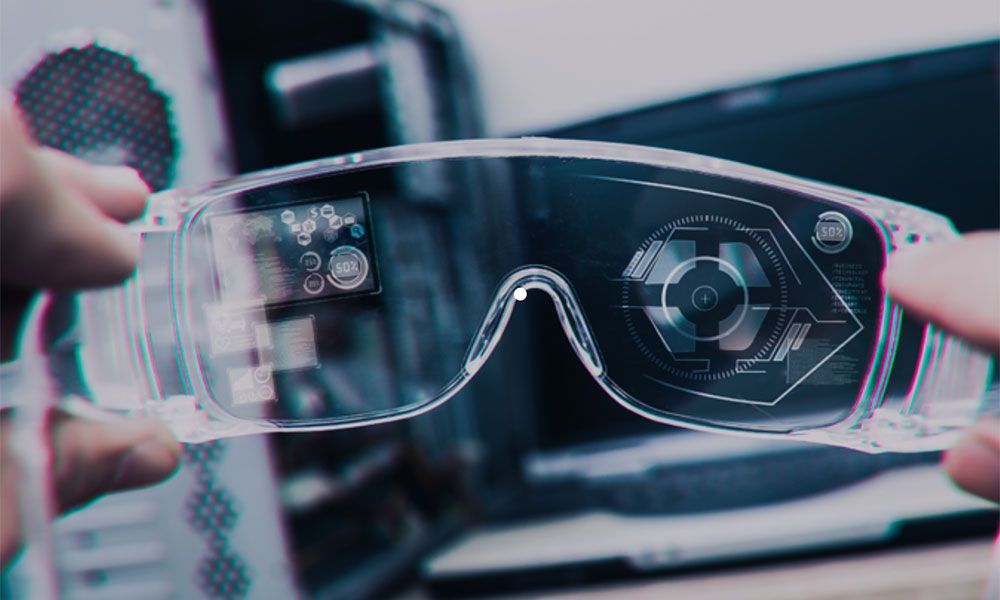
Evolution of AI Capabilities
The next generation of AI will transform video understanding in these ways:
- Emotional intelligence that captures and translates speaker sentiment into visual cues
- Contextual understanding that identifies implicit connections between concepts
- Visual metaphor recognition that translates verbal imagery into compelling visuals
- Multimodal analysis that integrates audio tone, visual elements, and verbal content
Projected AI Capability Development
Integration with Virtual Presentation Environments
The future will bring these exciting possibilities:
- VR presentation spaces that blend video elements with immersive environments
- Holographic representations of video speakers integrated with presentation content
- Interactive 3D models extracted from 2D video demonstrations
- Spatial arrangement of video insights for physical navigation in virtual spaces
Automated Customization
Future systems will adapt content based on:
- Real-time audience engagement signals to emphasize high-interest content
- Individual learning styles detected through interaction patterns
- Industry-specific terminology and reference framework preferences
- Cultural and regional context for global team presentations
Future Transformation Ecosystem
flowchart TD
A[Video Content] --> B[Advanced AI Processing]
B --> C{Multi-format Transformation}
C --> D[Traditional Presentations]
C --> E[Virtual Reality Experiences]
C --> F[Interactive Knowledge Bases]
C --> G[Augmented Reality Overlays]
D & E & F & G --> H{Audience-Specific Customization}
H --> I[Executive Format]
H --> J[Sales Format]
H --> K[Training Format]
H --> L[Technical Format]
I & J & K & L --> M[Real-time Adaptation]
M --> N[Dynamic Business Presentation]
PageOn.ai's Pioneering Role
PageOn.ai is leading the transformation revolution through:
- Multimodal understanding that captures the full richness of video content
- Advanced personalization engines that tailor content to specific business contexts
- Integration frameworks that connect transformed content across business systems
- Continuous learning capabilities that improve transformation quality over time
As these technologies continue to evolve, I believe we'll see video content transformation become increasingly seamless and powerful. The line between various content formats will blur, creating a fluid ecosystem where valuable insights can move effortlessly between mediums while gaining business context and impact at each step.
Transform Your Visual Expressions with PageOn.ai
Ready to convert your YouTube videos into powerful business presentations that drive results? PageOn.ai's AI-powered platform makes it easy to extract valuable insights, create professional slides, and customize content for your specific business needs.
Start Creating with PageOn.ai TodayConclusion: Unlocking the Business Value of YouTube Content
Throughout this guide, I've shared my insights on transforming YouTube videos into powerful business presentations. This evolution from entertainment to enterprise represents a significant opportunity for businesses to leverage existing content in new, impactful ways.
The journey from casual video to professional presentation isn't simply about visual reformatting—it's about extracting business relevance, enhancing context, and creating materials that drive specific outcomes. With the right approach and tools, this transformation process can save significant time while dramatically increasing content utility.
As AI capabilities continue to advance, the possibilities for video transformation will expand even further. PageOn.ai is at the forefront of this revolution, providing intelligent tools that understand content deeply and transform it meaningfully.
Whether you're looking to enhance sales presentations, create training materials, develop marketing assets, or prepare executive briefings, the ability to effectively transform YouTube videos into business presentations represents a valuable skill in today's content-rich business environment.
I encourage you to explore how these transformation techniques can benefit your specific business context, and to discover how PageOn.ai can help you unlock the full potential of your video content.
You Might Also Like
Transforming IT Support: Visual AI Solutions for Employee Help Desk Without the Wait
Discover how visual AI transforms traditional IT help desks into efficient support systems that eliminate wait times and boost productivity with interactive visual troubleshooting solutions.
Revolutionizing 3D Graphics Creation with AI: Transform Visual Design Workflows
Discover how AI is transforming 3D graphics creation across industries. Learn about text-to-3D, image-to-3D technologies, and practical workflows for designers and creators.
Mastering Adobe Acrobat: Complete Visual Guide to Transform Your PDF Workflow
Step-by-step visual guide to Adobe Acrobat - learn to create, edit, secure, and collaborate on PDFs with expert tips, interactive elements, and PageOn.ai integration.
Transforming Presentation Creation Through Conversational AI | Building Presentations With Natural Language
Discover how natural language conversations are revolutionizing presentation creation, enabling faster, more intuitive visual storytelling with AI assistance that transforms abstract ideas into compelling visuals.
